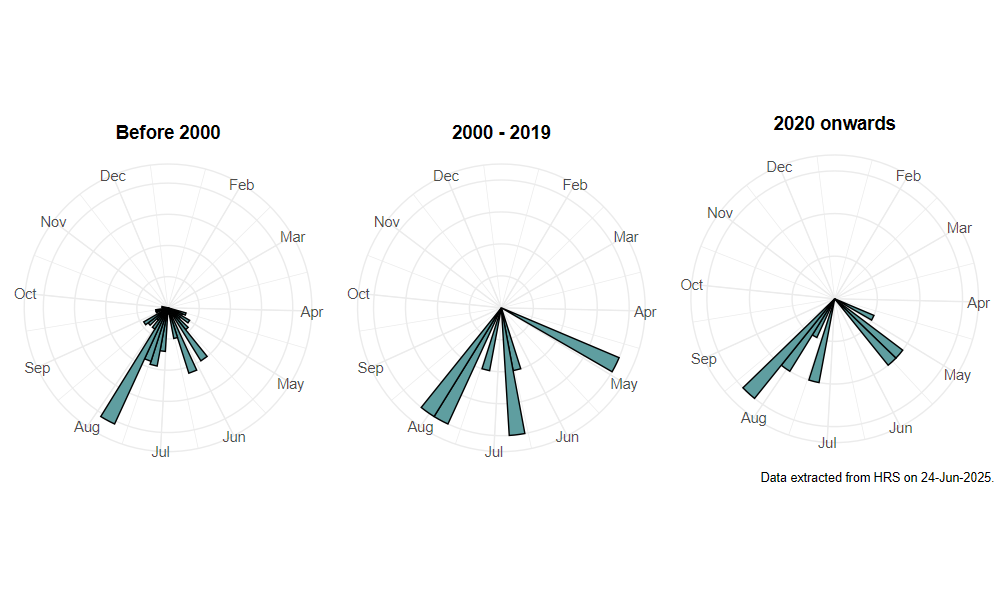Megasyrphus erraticus (Linnaeus, 1758)
Identification
Identification difficulty = 4. ![]()
![]() according to Ball & Morris, 20241
according to Ball & Morris, 20241
Synonymy
Syrphus annulipes Zetterstedt in Coe(1953)2, Didea annulipes (Zetterstedt) in Rotheray (1993)3, Megasyrphus annulipes (Zetterstedt) in Stubbs & Falk (1983)4. Eriozona (Megasyrphus) erratica (Linnaeus, 1758) is Stubbs & Falk, 20025.
Biology
The larva is aphidophagous, and usually associated with conifers (Abies, Picea and Pinus), although it is also known to feed on other arboreal aphids such as those on sallows Salix sp. Adults are often associated with open rides and glades in conifer plantations, especially when there is water present such as atreams or ditches, where they visit a wide range of flowers. They are easily confused with Syrphus in the field, but the thorax is quite noticeably blacker and shiny, and in life the markings are orange rather than yellow.
Flight period
The following plots show the number of unique records per week excluding those reported to be of immature stages.

Status
Lower risk (Nationally scarce) - Ball & Morris, 20146.
Distribution
Primarily a northern and western species that is associated with conifer plantations.

Trends
The following plots show the Frescalo TFactor vs year and a map of the rescaled frequency (all records) for the species.
-
Ball, S., & Morris, R. (2024). Hoverflies of Britain and Ireland. WILDGuides (3rd ed.). Oxford: Princeton University Press. ↩
-
Coe, R. (1953). Diptera: Syrphidae. Handbooks for the Identification of British Insects, 10(1), 1–98. ↩
-
Rotheray, G. (1993). Colour guide to hoverfly larvae (Diptera, Syrphidae) in Britain and Europe. Dipterists Digest (first series), 9, 1–155. ↩
-
Stubbs, A., & Falk, S. (1983). British Hoverflies: An Illustrated Identification Guide (1st ed.). Reading: BENHS. ↩
-
Stubbs, A., & Falk, S. (2002). British Hoverflies An Illustrated Identification Guide (2nd ed.). Reading: BENHS. ↩
-
Ball, S., & Morris, R. (2014). A review of the scarce and threatened flies of Great Britain. Part 6: Syrphidae. ( No. 9). Species status (pp. 1–130). Peterborough: JNCC. ↩